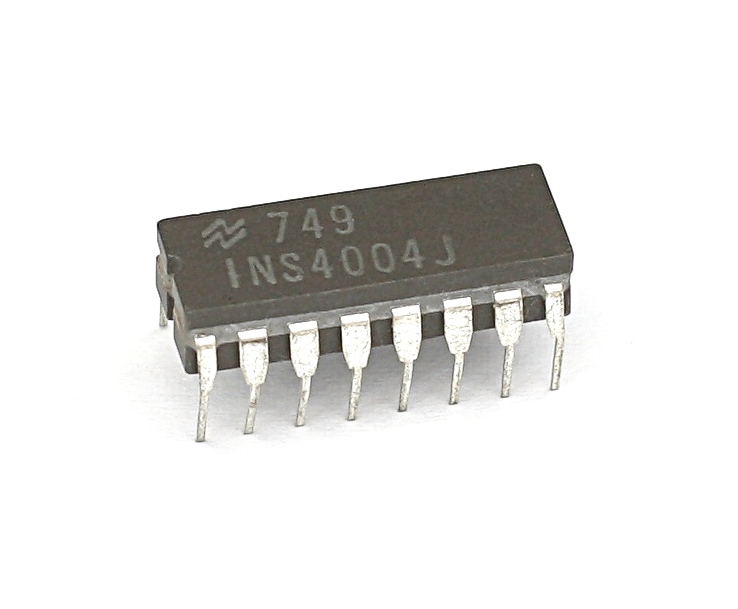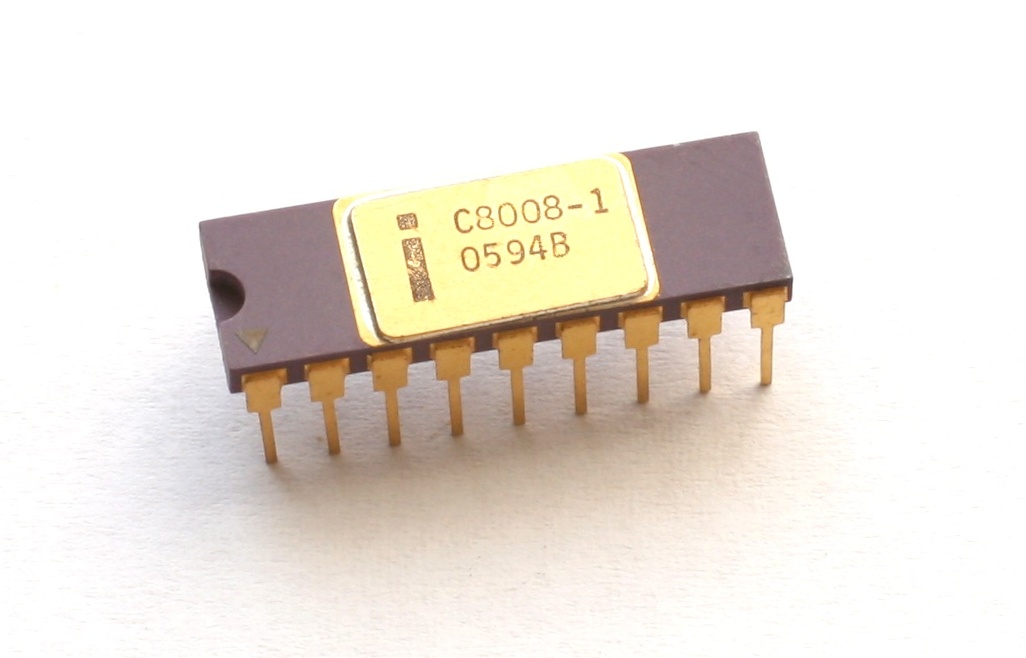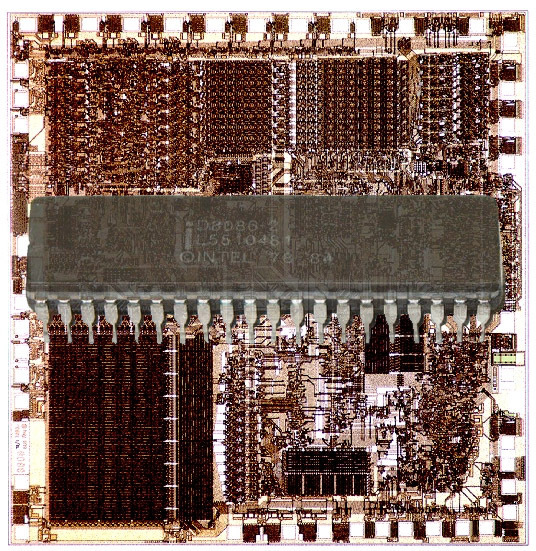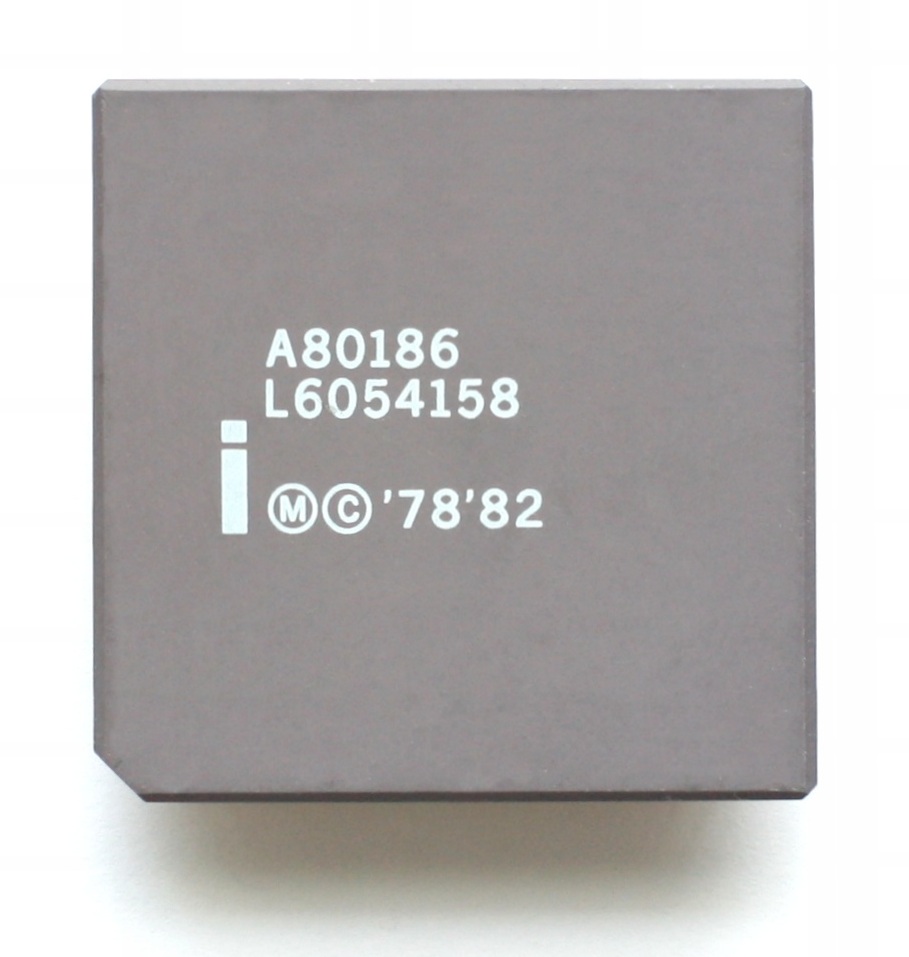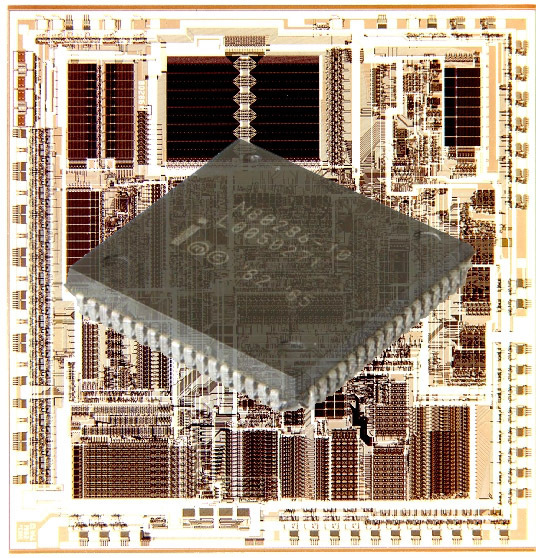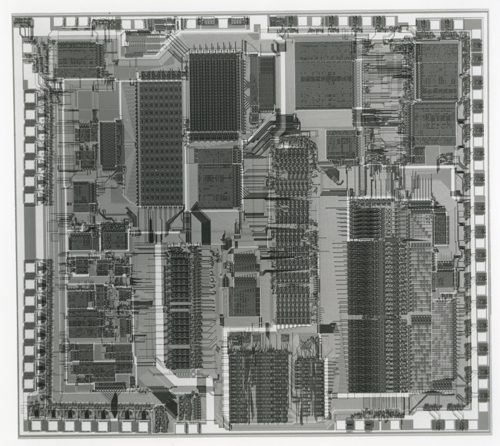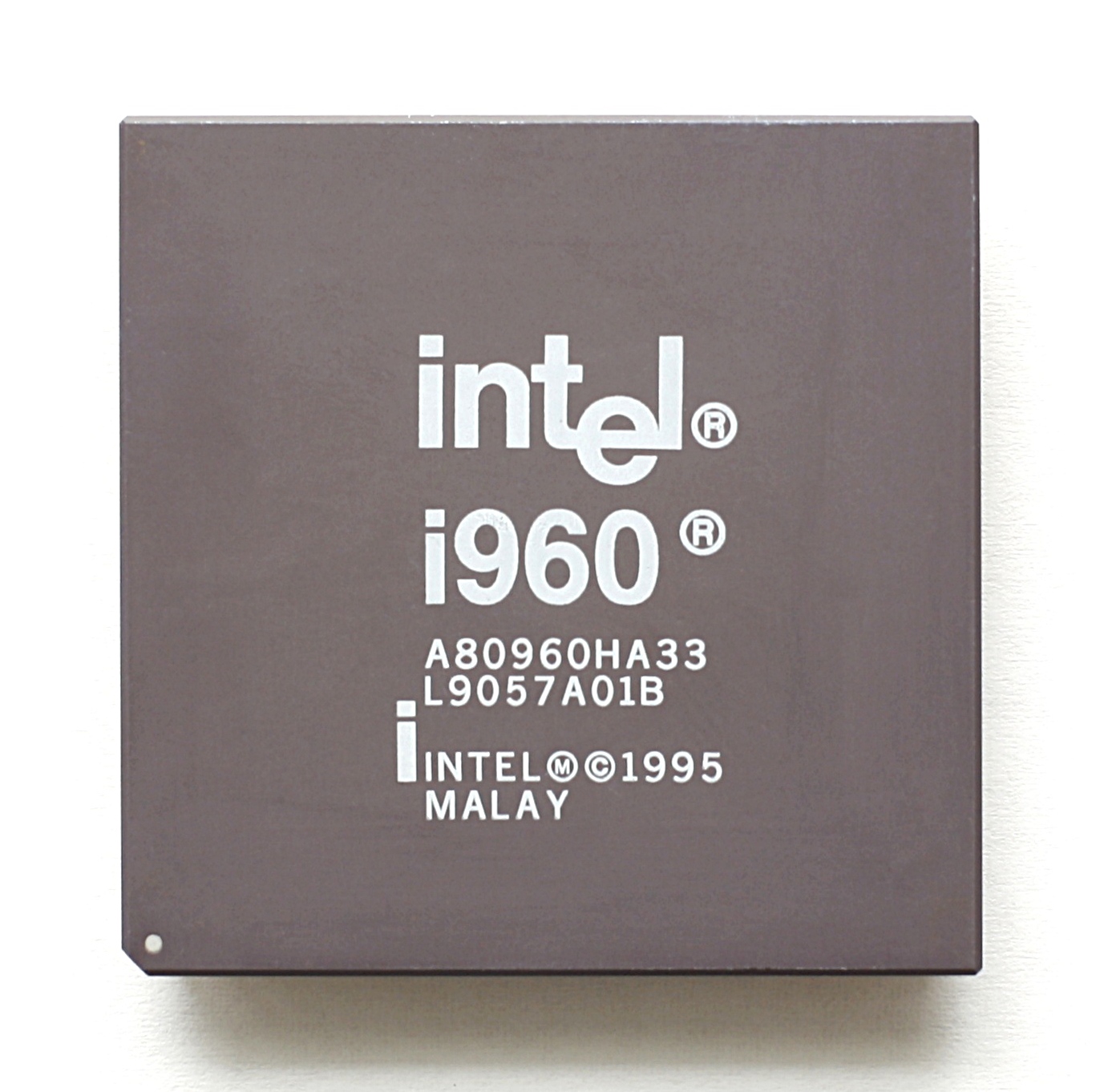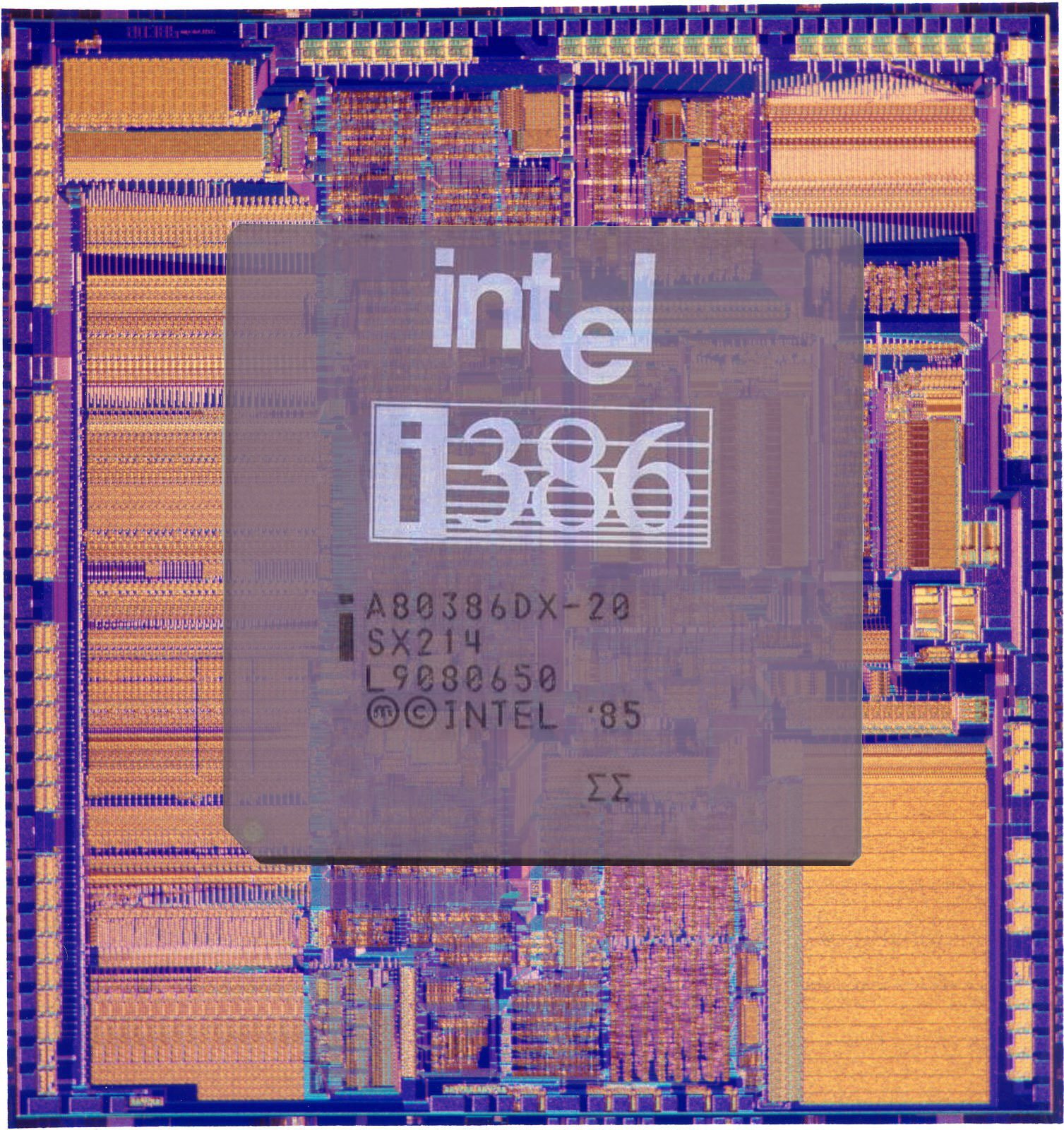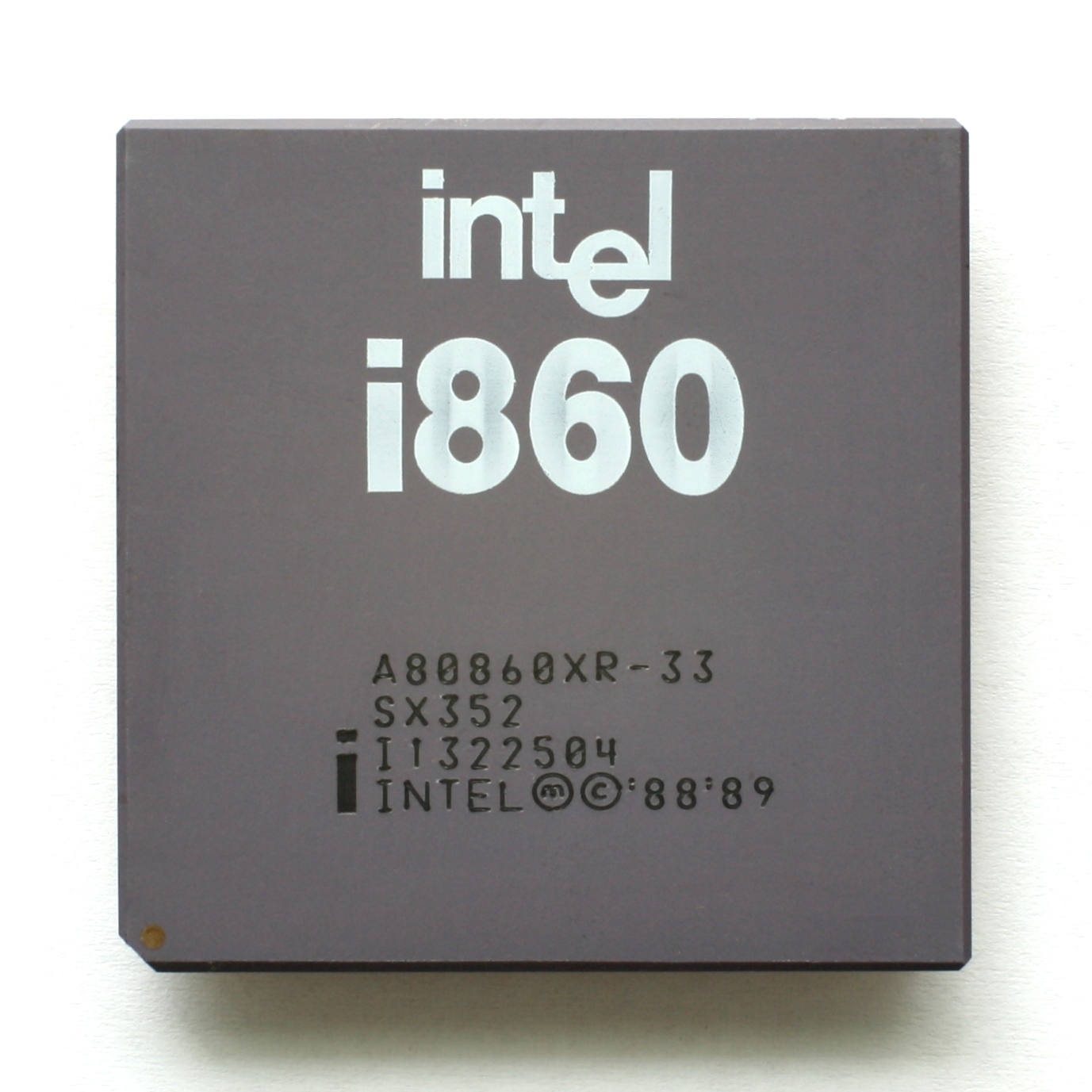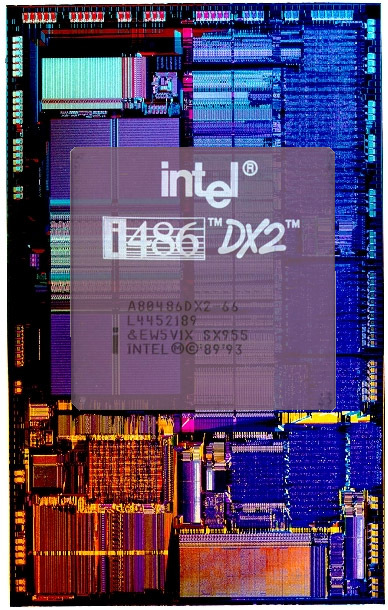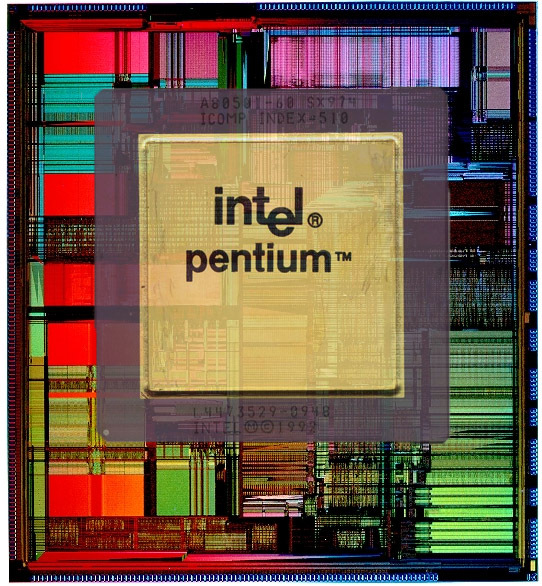The History Of Intel CPUs: Updated!
Intel Begins with The 4004
The first microprocessor sold by Intel was the four-bit 4004 in 1971. It was designed to work in conjunction with three other microchips, the 4001 ROM, 4002 RAM, and the 4003 Shift Register. Whereas the 4004 itself performed calculations, those other components were critical to making the processor function. The 4004 was mostly used inside of calculators and similar devices, and it was not meant for use inside of computers. Its max clock speed was 740 kHz.
The 4004 was followed by a similar processor known as the 4040, which was essentially an improved variation of the 4004 with an extended instruction set and higher performance.
MORE: Best CPUs
MORE: Intel & AMD Processor Hierarchy
MORE: All CPU Content
8008 And 8080
The 4004 made a name for Intel in the microprocessor business, and to capitalize on the situation, Intel introduced a new line of eight-bit processors. The 8008 came first in 1972, followed by the 8080 in 1974 and the 8085 in 1975. Although the 8008 was the first eight-bit processor produced by Intel, it is not as notable as its predecessor or its successor, the 8080. It was faster than the 4004 thanks to its ability to process data in eight-bit chunks, but it was clocked rather conservatively between 200 and 800 kHz, and the 8008's performance simply didn't attract many system developers. The 8008 used 10-micrometer transistor technology.
Intel's 8080 was far more successful. It expanded on the design of the 8008 by adding new instructions and transitioning to six-micrometer transistors. This allowed Intel to more than double the clock rates, and the highest-performance 8080 chips in 1974 came running at 2 MHz. The 8080 was used in countless devices, which lead to several software developers, such as the recently formed Microsoft, to focus on software for Intel's processors.
Get Tom's Hardware's best news and in-depth reviews, straight to your inbox.
Eventually when the 8086 was released, it was made source compatible with the 8080 to maintain backwards compatibility with this software. As a result, the 8080s and key hardware elements have been present inside of all x86-based processor ever produced, and 8080 software can technically still run on any x86 processor.
The 8085 was essentially a less expensive and higher-clocked variant of the 8080, which was highly successful as well though less influential.
8086: The Beginning Of x86
Intel's first 16-bit processor was the 8086, which helped to boost performance considerably compared to earlier designs. Not only was it clocked higher than the budget-oriented 8088, but it also employed a 16-bit external data bus and a longer six-byte prefetch queue. It was also able to run 16-bit tasks (though most software at this time was designed for eight-bit processors). The address bus was extended to 20-bit, which enabled the 8086 to access up to 1MB of memory and therefore increase performance.
The 8086 also became the first x86 processor, and it used the first revision of the x86 ISA, which nearly all of the processors created by AMD or Intel since the introduction of the 8086 have been based on.
Intel also produced the 8088 around the same time. This processor was based on the 8086, but with half as many data lines and a four-byte prefetch queue. This caused a loss of balance, as the narrower bus cut into instruction fetch rate, forcing Intel's execution unit to idle much of the time. It still had access to up to 1MB of RAM and ran at higher frequencies than previous processors; however, it was quite a bit slower than the 8086.
80186 And 80188
Intel followed up the 8086 with several other processors, all of which used a similar 16-bit architecture. The first was 80186, aimed at embedded applications. To facilitate this, Intel integrated several pieces of hardware typically found on the motherboard into the CPU, including the clock generator, interrupt controller, and timer. As a side effect, certain instructions ran notably faster on 80186 than 8086, even at the same clock rate. But of course, Intel naturally pushed the CPU's frequency up over time to further improve performance.
The budget-oriented 80188 similarly contained several pieces of hardware integrated into the processor. But like the 8088, its data bus was cut in half.
80286: More Memory, More Performance
The 80286 was released the same year as the 80186 and had nearly identical features, but it extended the address bus to 24-bit, which enabled the processor to access up to 16MB of memory.
iAPX 432
The iAPX 432 was an early attempt by Intel to diverge from its x86 portfolio in favor of an entirely different design. Intel expected iAPX 432 to be several times faster than its other offerings. The processor ultimately failed, however, due to some major design flaws. Although x86 processors are relatively complex, the iAPx 432 took CISC to a whole new level of complexity. The hardware design was rather large, which forced Intel to craft it out of two separate dies. The processor was also quite data hungry and failed to perform well without extremely high amounts of bandwidth. The iAPX 432 managed to outperform the 8080 and 8086, but it was quickly outpaced by newer x86 products, and eventually it was abandoned.
i960: Intel's First RISC
Intel created its first RISC processor in 1984. It was not designed as a direct competitor to the company's x86 processors because it was intended as a secure embedded solution. Internally, it was a 32-bit superscalar architecture that used Berkeley RISC design concepts. The first i960 processors were clocked relatively low, with the slowest model running at 10 MHz, but over the years it was improved and transitioned to smaller fabs that enabled it to hit up to 100 MHz. It also supported 4GB of protected memory.
The i960 was widely used inside of military systems as well as in business systems.
80386: x86 Turns 32-bit
Intel's first 32-bit x86 processor was the 80386, released in 1985. One key advantage that this processor had was its 32-bit address bus that allowed it to support up to 4GB of system memory. Although this was far more than anyone was using at the time, RAM limitations often hurt the performance of prior x86 and competing processors. Unlike modern CPUs, at the time the 80386 was released, more RAM almost always translated into a performance increase. Intel also implemented several architectural enhancements that helped push performance up above the 80286, even when both systems used the same amount of RAM. It also supported virtual mode processing, which increased multi-tasking support.
To segment its product line-up with a more budget-friendly offering, Intel also introduced the 80386SX. This processor was almost identical to the 80386; it still employed a 32-bit architecture, but half of its data bus was cut to 16 bits for cost-saving purposes.
i860
In 1989, Intel made another attempt to move away from its x86 processors. It created a new RISC CPU known as the i860. Unlike the earlier i960, this CPU was designed to be a high-performance model to compete in the desktop market, but the design proved problematic. Its most significant flaw was that the processor's performance relied entirely on the compiler to place instructions in the order they would need to be executed when the software was first created. This helped Intel keep the die size and overall complexity of the i860 down, but it was nearly impossible to correctly list every instruction from beginning to end when compiling the program. This caused the CPU to constantly stall while it attempted to work around the problem.
80486: Integrating The FPU
Intel's 80486 was another significant step up in terms of performance. The key to its success was tighter integration of components into the CPU. The 80486 was the first x86 CPU to contain L1 cache. Early 80486 models came with 8KB on-die, and were etched on a 1000nm process. But as the design transitioned to 600nm, the L1 cache size doubled to 16KB.
Intel also incorporated the FPU into the CPU, which up to that point had been a separate functional processing unit. By moving these pieces of hardware into the host processor, latency between them dropped sharply. The 80486 also used a faster FSB interface to increase bandwidth, and the core had various other tweaks to push up IPC. These changes increased the 80486's performance significantly, and high-end models were multiple times faster than the older 80386.
The first 80486 processors reached 50 MHz, and later models that used the improved 600nm process went as high as 100 MHz. To target budget-oriented users, Intel also released a version of the 80486 known as the 80486SX, which had the FPU disabled.
P5: The First Pentium
The Pentium emerged in 1993 as the first Intel x86 processor that didn't follow the 80x86 number system. Internally, the Pentium used the P5 architecture, which was Intel's first x86 superscalar design. Although the Pentium was generally faster than the 80486 in every way, its most prominent feature was a substantially improved FPU. The original Pentium's FPU was more than ten times faster than the 80486's aging unit. This became an even more significant feature in later years when Intel released the Pentium MMX. This processor was architecturally the same as the original Pentium, but featured support for Intel's new MMX SIMD instruction set that could drastically boost performance.
Intel also increased the L1 cache size on its Pentium processors relative to the 80486. Initial Pentiums contained 16KB, while the Pentium MMX moved up to 32KB. Naturally, these processors also ran at higher clock rates. The first Pentium processors used 800nm transistors and could hit just 60 MHz, but subsequent revisions transitioned to Intel's 250nm process and pushed frequencies up to 300 MHz.
-
abryant Archived comments are found here: http://www.tomshardware.com/forum/id-3322311/history-intel-cpus.htmlReply -
mitch074 Strange that Itanium is missing, the Celeron 300A/333 is gone, the original Pentium bug disappeared, no mention is made that the 487 was actually a fully active 486DX, and that AMD led the desktop for "a short time" while it led from the moment Netburst came out (2000) to the moment Core replaced it (2006). On another note, a 64-bit CPU doesn't run 64-bit software faster : it is required to have one to run some. But since AMD came up with x86-64, I guess some approximation is allowed...Reply -
Tom Griffin Remember the ABIT BP6a motherboard; I was running dual Celery (Celeron) 300mhz processors overclocked to 533mhz. What a flashback.Reply -
AndrewJacksonZA 1) Where can we see what was updated please?Reply
2) Where are the Phi CPUs please?
3) Where can we view this as a one-pager please? -
ta152h There are quite a few mistakes here.Reply
For one, the 8086 was not available in higher clock speeds than the 8088.
The 8086 could NOT run 8080 code. Source code compatible does not mean that. It means it was very easy to recompile the code so it would work with the newer processor, not that the compiled code would work.
The 286 section is oddly very limited. It was an enormous improvement over the 8086, as it added more memory, much more performance, and also virtual memory and hardware assisted multi-tasking.
The 80386 was not significantly faster than the 286 running 16-bit code, despite what the author says. Clock for clock, they were very close, although 386 based systems tended to get SRAM caches, whereas the 16 and 20 Mhz 286s rarely did.
The 386SX not only cut down the data bus to 16 bits, it also cut down the address bus to 24-bits.
The remarks on the i860 are bizarre. " ... it was nearly impossible to correctly list every instruction from beginning to end when compiling the program. " This is wrong, it was just very difficult to order the instructions very efficiently. Of course it had no problem listing them correctly, or the program wouldn't run. Intel tried it again with Itanium, and depended on the compilers to order instructions very efficiently, and also had difficulties.
The author oddly left out the most significant part of the 486; it was the first pipelined x86 CPU, and that was a large part of the performance improvement.
The Pentium's FPU was not 10x faster than the 486, but it was the biggest improvement. Unless you're comparing a very low clocked 486 to a high clocked Pentium. Clock per clock, it was not nearly 10x faster.
Also MMX instructions were not related to the FPU, but were actually integer based.
The first Pentiums actually ran at 66 MHz, but ran really hot, and they had yield problems, so sold 60 MHz Pentiums along with them, at a significant discount. Most people bought the 60 MHz because they were so much cheaper initially, but 66 MHz was out there.
The Pentium MMX only reached 233 MHz as sold by Intel, not 300 MHz.
The Pentium III (Katmai) was a Pentium II with SSE instructions added, nothing more. The nonsense about fewer pipelines and IPC improvements (outside of SSE code) is fabricated with regards to Katmai.
The Celeron originally had no cache, but there was another version (not a Coppermine based) that had 128K cache on the processor. In some ways, it was faster than the Pentium III it was based on, because the cache was faster.
Coppermine's cache was wider, and generally superior, but Celeron's were very competitive with Katmai based products, and were the favorites of overclockers. -
mitch074 Reply21307316 said:The Celeron originally had no cache, but there was another version (not a Coppermine based) that had 128K cache on the processor. In some ways, it was faster than the Pentium III it was based on, because the cache was faster..
The Celeron 300A/333 you're referring to is the Mendocino core, wasn't based on Pentium III - it didn't have support for SSE. It can be seen as a precursor for Pentium III inasmuch as it had 128 Kb of level 2 non-inclusive low-latency cache - and it was the first Intel P6-family CPU to have that.
It was soon replaced with the Coppermine core, which was indeed based on the Pentium III core (SSE) as it was a smaller die (smaller engraving) thus much cheaper to produce. -
milkod2001 Still on Haswell 4770k. Don't see any reasons to upgrade apart from m.2 SSDs maybe but have regular SATA SSD and there might be no difference in actual performance. Right?Reply
